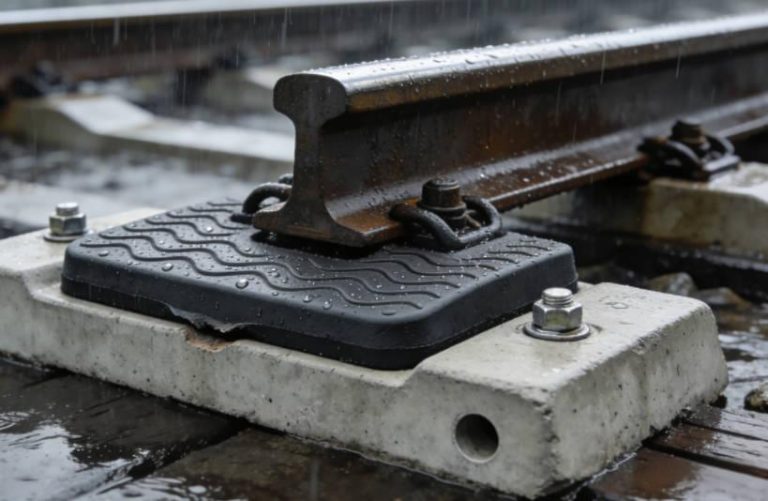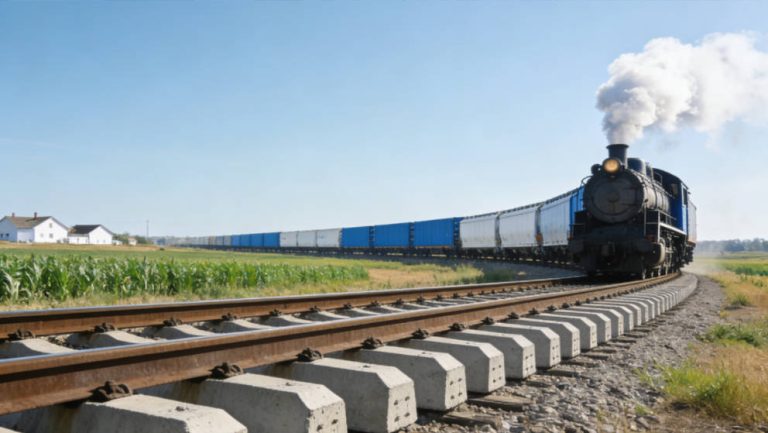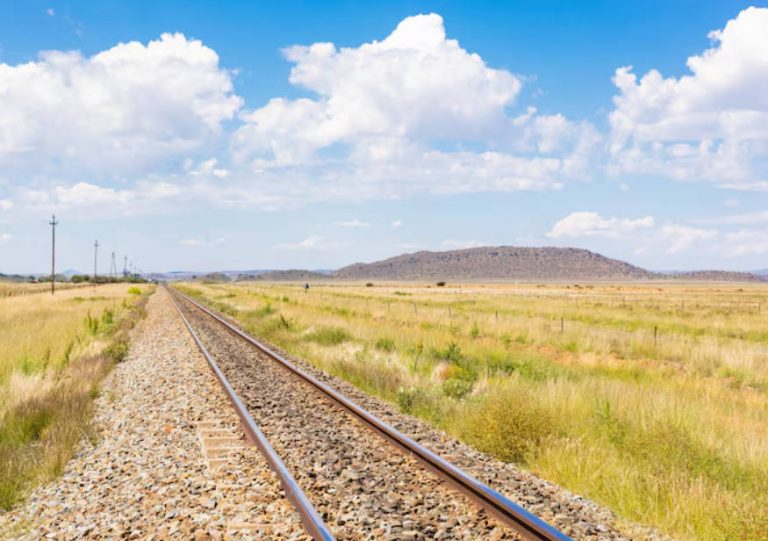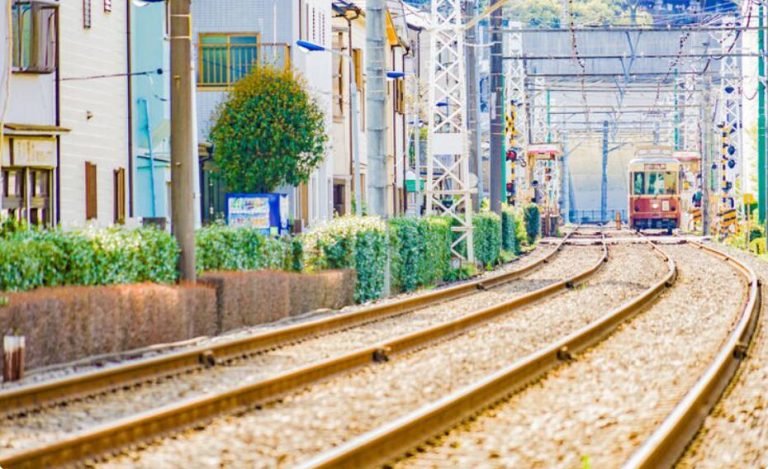Railway level crossings are vital for safe travel. They help vehicles and people cross train tracks without trouble. Picking the right material for these crossings matters a lot. It affects safety, how long the crossing lasts, and costs.
This article compares rubber vs. concrete level crossings. We focus on how they work, their costs, and upkeep needs. This helps you find the best material for railway crossing use. Whether you run trains, plan roads, or build tracks, this guide helps you choose wisely for safer railways.
Why Choosing the Right Material Is Important
The material in railway crossings impacts safety and how well things work. A bad choice can cause frequent fixes, dangers, or delays for trains and cars. The debate of rubber vs. concrete level crossing often looks at balancing strength, safety, and saving money. Let’s see how thick rubber pads and concrete stack up.
How Rubber and Concrete Perform
Reducing Shakes and Noise with Thick Rubber Pads
Rubber level crossings are great at soaking up shakes. Trains make a lot of shakes, which can harm nearby buildings or bother people. Thick rubber pads, like those from SAFE Rail Fastening System, act like a soft cushion. They reduce shakes between the rail and crossing surface. This cuts down wear on tracks and keeps noise low. It helps people riding trains and those living close by.
Concrete crossings, though strong, don’t bend much. They let shakes pass through easily. This can wear out tracks or nearby structures faster. In cities or busy spots, rubber’s ability to quiet shakes makes it a top pick for railway crossing durability.
Grip and Safety for Road Users
Safety is key where cars and people meet train tracks. Rubber crossings have rough surfaces. These include grit or patterns that stop slipping. They stay safe even when wet or icy. This lowers accident risks for cars and walkers.
Concrete crossings are sturdy but can get slick in bad weather. They need special coatings to stay safe, which cost extra. Over time, concrete may crack or wear unevenly. This can be risky. Rubber’s bendy nature and grip make it safer in many conditions.
Handling Weight and Protecting Tracks
Both materials must handle heavy trains and cars. Thick rubber pads spread weight evenly. This lowers stress on rails and supports. It stops tracks from bending and makes them last longer. Rubber’s stretchy nature also protects against damage from big vehicles, like trucks.
Concrete crossings are very strong, especially for fast or heavy trains. But their hardness can put more stress on tracks. This leads to faster wear. For projects needing strong railway crossing durability, rubber balances toughness and flexibility well.
Cost Breakdown: Rubber vs. Concrete
Starting Costs for Installation
When looking at rubber vs. concrete level crossing costs, the first price matters. Concrete crossings, like precast panels, are often cheaper to make and set up. They’re common and easy to produce. But installing them takes time. They need careful placement and sometimes digging or base work.
Rubber crossings, like SAFE’s railway rubber level crossing panels, may cost more at first. They use high-quality materials, like strong rubber. Yet, their block-like design makes setup quick.
This cuts labor costs and track downtime. For projects needing fast work with less hassle, rubber is a cost-effective railway solution.
Long-Term Upkeep Costs
Upkeep is where rubber crossings stand out. Thick rubber pads need fewer replacements. They last 8–25 years, based on traffic and weather. Their block design lets you swap out one piece without tearing up the whole crossing. This saves time and money. Simple cleaning and checks keep them working well.
Concrete crossings last long but crack or chip easily, especially with heavy use. Fixing cracks or replacing panels costs a lot. It often means closing tracks for a while. Over time, rubber’s low upkeep makes it a smarter cost-effective railway solution.
| Feature | Rubber Level Crossing | Concrete Level Crossing |
| Shake Reduction | Great, soaks up shakes well | Weak, passes shakes through |
| Grip | Strong, non-slip surface | Okay, needs extra coatings |
| Weight Handling | Good, spreads weight evenly | Very good, but hard, stresses tracks |
| Setup Cost | Higher at first, quick setup | Lower at first, slow setup |
| Upkeep Cost | Low, easy fixes, lasts 8–25 years | Higher, needs frequent fixes |
| Lifespan | 8–25 years, based on use | 15–30 years, based on upkeep |
Upkeep Needs: Rubber vs. Concrete
Maintaining Rubber Level Crossings
Keeping rubber level crossings in shape is easy:
- Check Often: Look for wear or damage every 3–6 months, especially in busy areas.
- Clean Well: Clear dirt, oil, or junk to keep the grip strong.
- Lubricate Bolts: Keep fasteners rust-free to hold panels tight.
- Swap Parts: Replace worn pads every 5–10 years, based on use.
These tasks are quick and cheap. They cause little delay for trains or cars. SAFE’s rubber pads are built to last, so you replace them less often.
Maintaining Concrete Level Crossings
Concrete crossings need more work:
- Fix Cracks: Fill or seal cracks from heavy loads or weather changes.
- Add Coatings: Use non-slip layers to keep surfaces safe.
- Replace Panels: Swap out broken pieces, which may need track closures.
- Check Alignment: Make sure panels stay even to avoid bumps.
These jobs take time and money. They often disrupt traffic. For those wanting cost-effective railway solutions, rubber’s simple upkeep is a big win.
Caring for the Environment
Green choices matter in railway projects. Rubber crossings, especially those from recycled materials like SAFE’s products, help the planet. They reuse things like old tires. They also cut noise, making life better for nearby people. But making and disposing of rubber needs careful handling to stay eco-friendly.
Concrete crossings use a lot of energy to make. Their waste is hard to recycle. Their hardness also wears tracks faster, leading to more repairs and resource use. For green projects, rubber is often the best material for railway crossing sustainability.
About SAFE: A Top Maker of Railway Rubber Pads
SAFE Rail Fastening System is a trusted name in railway parts. They focus on making high-quality thick rubber pads and fastening systems. With over 10 years of work, SAFE blends smart engineering with strong materials. Their rubber pads use top-grade rubber, meeting standards like GB/T 21527-2008 and EN 13146-4. SAFE’s focus on quality, green practices, and performance makes them a great choice for rail safety and long-lasting tracks.
FAQs: Rubber vs. Concrete Level Crossings
Q1: Why do people choose thick rubber pads for railway crossings?
A: Thick rubber pads soak up shakes, lower noise, and offer great grip. They spread weight evenly. This cuts track wear and boosts railway crossing durability for trains and road users.
Q2: How often do rubber level crossings need upkeep?
A: Check rubber crossings every 3–6 months for wear or damage. Clean them and lubricate bolts. Thick rubber pads may need replacing every 5–10 years, based on how busy the crossing is.
Q3: Are concrete crossings tougher than rubber ones?
A: Concrete lasts 15–30 years but cracks easily and needs frequent fixes. Thick rubber pads last 8–25 years with less upkeep. They’re a cost-effective railway solution for many.
Q4: Can thick rubber pads work for fast train crossings?
A: Yes, thick rubber pads suit fast train crossings if made to specific standards. They dampen shakes well, keeping things stable and safe.
Q5: Why is rubber better for city railway crossings?
A: Rubber cuts noise and shakes, making it great for cities. It keeps riders comfy and doesn’t bother nearby people. Its non-slip surface adds safety.
Find the Right Fit for Your Railway Needs
Picking the best material for railway crossing means weighing how they work, their costs, and upkeep. Rubber level crossings offer great shake control, low upkeep, and safety perks. They’re perfect for cities or busy spots. Using high-quality thick rubber pads saves money over time, keeps tracks safe, and supports green goals. Check out SAFE’s website to find smart railway solutions and improve your crossings today.






